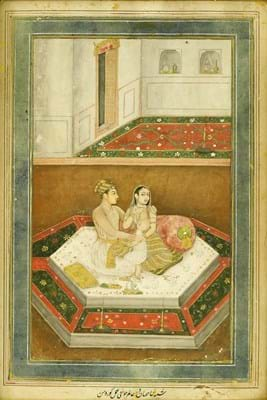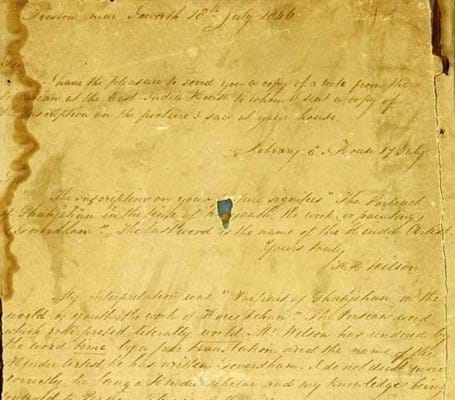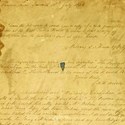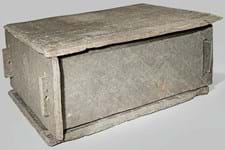A letter dated July 18, 1846 written in the flowing hand of Robert Emlyn Lofft (1782-1847) of Troston Hall near Bury St Edmunds, is pasted to the back of the frame.
In it Lofft, a British Indian Army officer and collector of Arabic and Persian manuscripts, writes: ‘I have the pleasure to send you a copy of a note from [Horace Hayman Wilson] the Librarian at the East India House to whom I sent a copy of the inscription on the picture I saw at your house. The inscription on your picture signifies The Portrait of Shahjehan in the time of his youth, the work (or painting) of the painter Goverdhan.’
The artist is considered one of the leading Mughal royal painters of the first half of the 17th century, with this picture dated on stylistic ground to the 1630s.
The identity of the sitters is unclear. Based on the inscription, Lofft believed the scene of a prince seated with his consort in a palace chamber to represent the betrothal of the youthful Shah Jahan to Mumtaz Mahal c.1607-8. It is conceivable that this painting was, like the Taj Mahal mausoleum, a retrospective celebration of their loving union.
However, an alternative theory is that the prince is Dara Shikoh, Shah Jahan’s favourite son who, born in 1615, would have been aged 15 or thereabouts when this picture was painted.

















